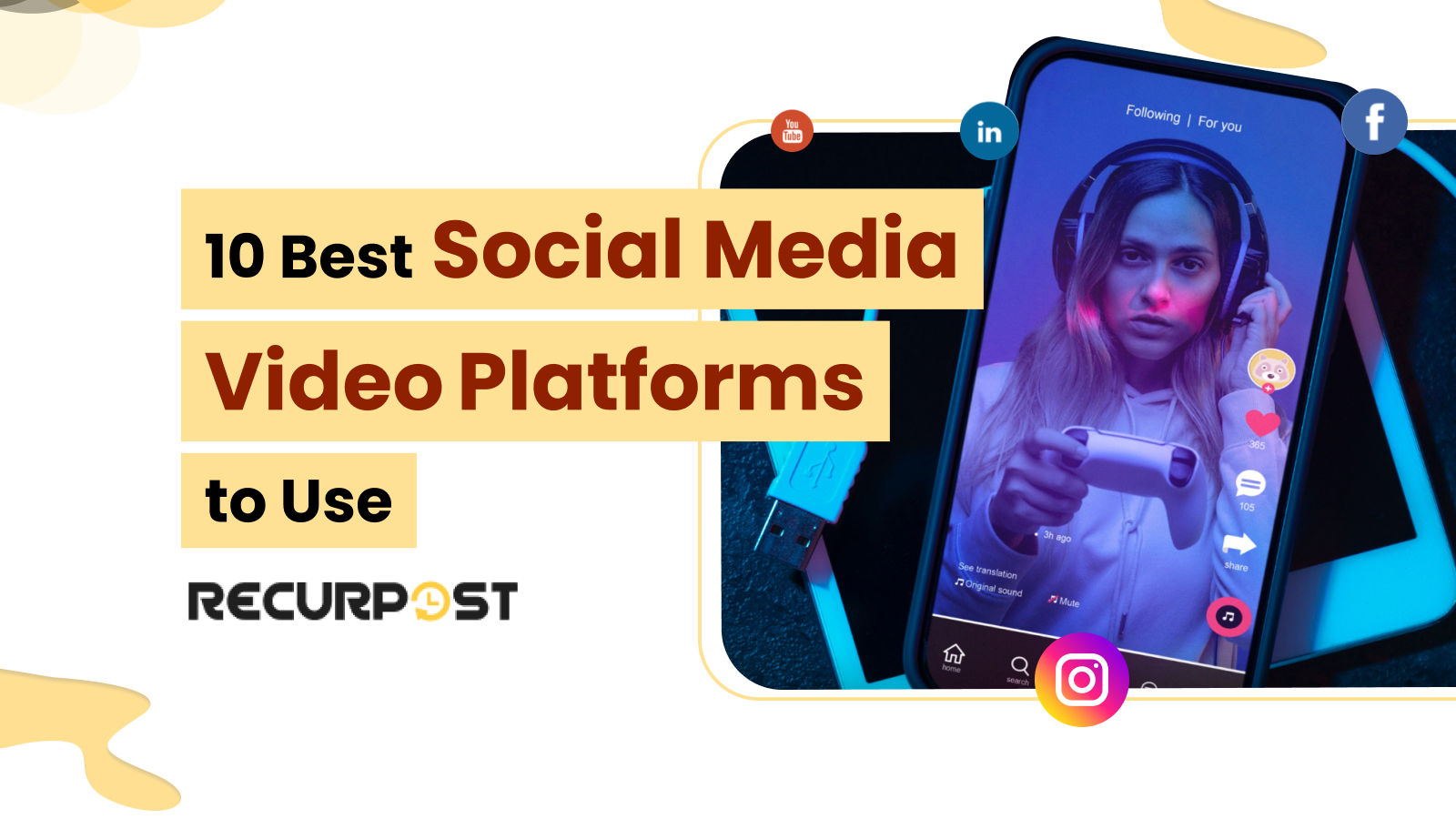The Rise of Video Marketing in 2025
Every major Social Media Video Platform is shaping online traffic. By 2025, video content is expected to drive 82% of global internet use (Cisco).
Social media video marketing helps brands grow revenue 49% faster than those without video strategies (Wyzowl, 2023). Brands that don’t use video miss significant growth opportunities.
But here’s the catch: Not every video-sharing platform serves the same role. Some build loyal communities while others boost direct sales. This guide ranks the Top 10 Social Media video Platforms for 2025 based on engagement metrics, marketing effectiveness, and monetization potential.
Whether you want virality, brand lift, or revenue, this 2025 list shows the right video distribution platforms for your goals. For cost-effective visual enhancement, free stock videos or images can improve your content’s appeal.
How We Ranked the Top Social Media Video Platforms
Our Social Media Video Platform is based on key performance metrics that reflect audience impact and revenue potential:
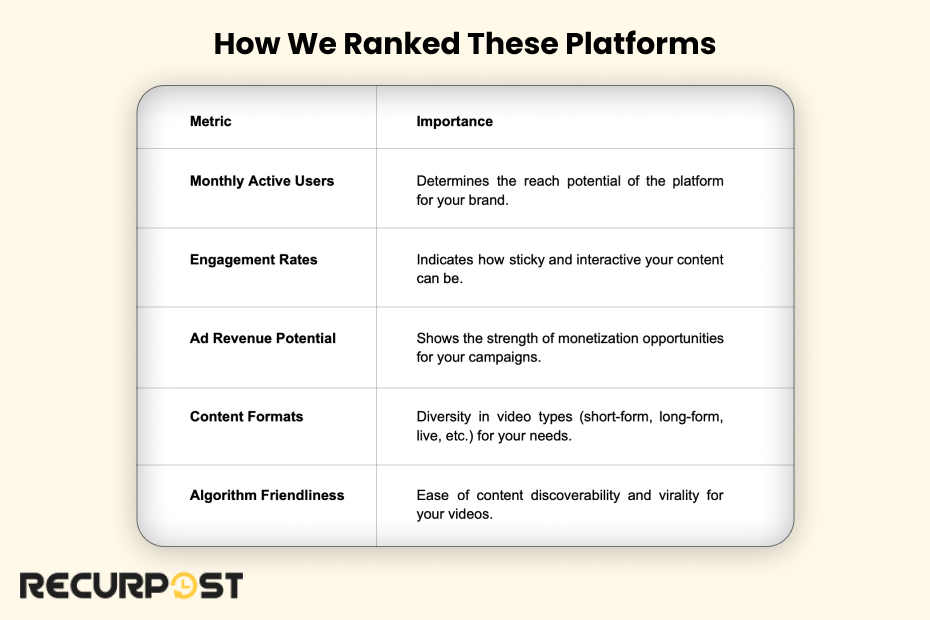
We used third-party tools to consolidate analytics dashboards and engagement metrics, making performance tracking clear across multiple video-sharing platforms.
These metrics identify which platforms align with your specific goals and audience. Platforms with high engagement rates, like TikTok or Instagram, build loyal communities, while YouTube leads in monetization through ad revenue and long-form content.
Understanding social media basics precedes effective platform-specific strategies for beginners.
Top Video-Sharing Social Media Platforms by Monthly Active Users
Platform popularity signals audience reach. Below are the top 10 Social Media Video Platforms, ranked by monthly active users (MAUs):
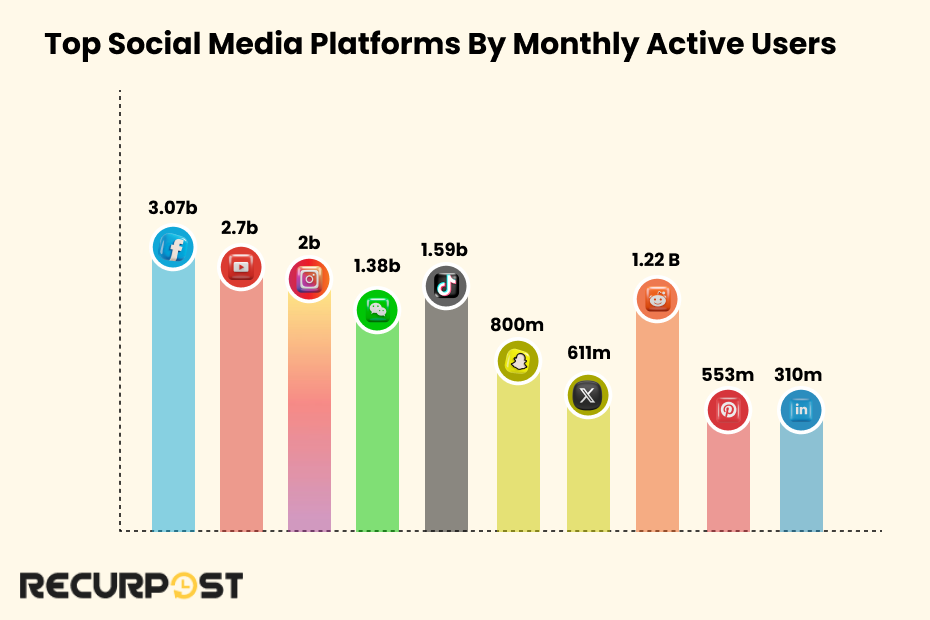
1. Facebook: 3.07 billion
2. YouTube: 2.7 billion
3. Instagram: 2 billion
4. WeChat: 1.38 billion
5. TikTok: 1.59 billion
6. Snapchat: 800 million
7. X/Twitter: 611 million
8. Reddit: 1.22 billion
9. Pinterest: 553 million
10. LinkedIn: 310 million
These figures represent the current landscape, with TikTok, Instagram, and Facebook emerging as the most popular social media video platforms with vast user bases.
While these platforms dominate, underrated social media apps like Discord, QQ, MeWe, BeReal, Tumblr, and Telegram offer niche communities with lower competition.
The 10 Most Impactful Social Media Video Platforms in 2025
Video content now drives engagement across every Social Media Video Platform, shaping how brands connect with audiences.
Platform Feature Comparison at a Glance
Here’s a side-by-side comparison of the top video sharing platforms, showing length limits, live streaming, and monetization.
| Platform | Video Length | Live Streaming | Monetization | Best For |
|---|---|---|---|---|
| YouTube | Up to 12 hours | Yes | Ads, memberships | Long-form content |
| TikTok | Up to 10 minutes | Yes | Creator fund, gifts | Short viral content |
| Up to 90 minutes | Yes | Ads, shopping | Visual storytelling | |
| Up to 240 minutes | Yes | Ads, stars | Community building | |
| Up to 10 minutes | Yes | Sponsored content | B2B networking |
This chart makes it easy to see which video distribution platforms align with brand goals and audience preferences.
Below are the top 10 Social Media Video Platforms that dominate user attention and monetization in 2025:
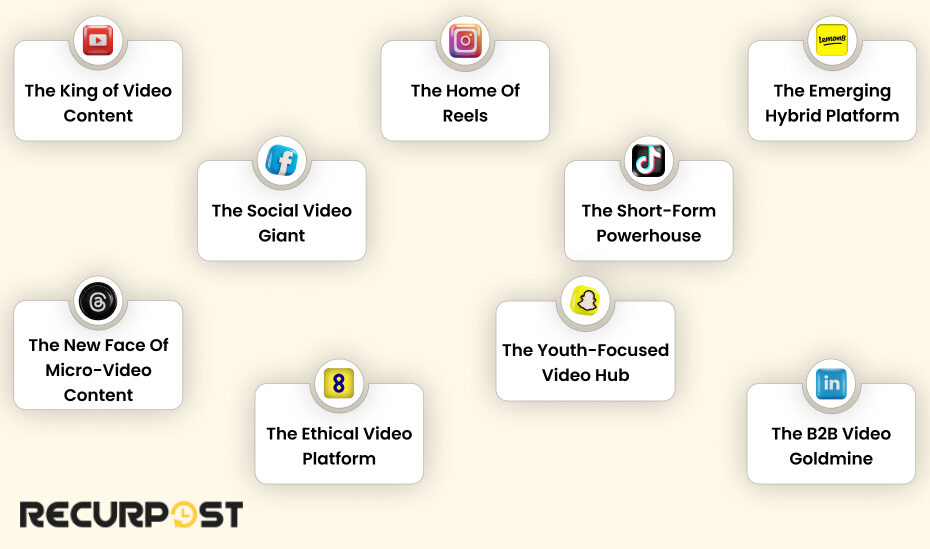
1. YouTube: As the largest video-sharing platform, YouTube offers a vast array of content, from educational videos to entertainment.
2. TikTok: Known for its short-form videos, TikTok has rapidly gained popularity, especially among younger audiences.
3. Instagram: With features like IGTV and Reels, Instagram has integrated video content seamlessly into its platform.
4. Facebook: Facebook is a social video giant that allows users to share and discover a wide range of video content, from live streams to pre-recorded videos.
5. Vimeo: Catering to professional creators, Vimeo offers high-quality video hosting platforms and sharing services
6. Twitch: Primarily focused on live streaming, Twitch is a favorite among gamers and eSports enthusiasts.
7. Dailymotion: This platform provides a mix of user-generated and professional content, similar to YouTube.
8. Snapchat: Known for its ephemeral content, Snapchat has also ventured into short-form video with its Discover feature.
9. LinkedIn: As a professional network, LinkedIn has embraced video content for business and educational purposes.
10. X/Twitter: Twitter allows users to share short videos, making it a platform for quick and engaging content.
These social media video platforms define 2025 video marketing: from short-form virality to long-form revenue models.
1. YouTube – The King of Video Content
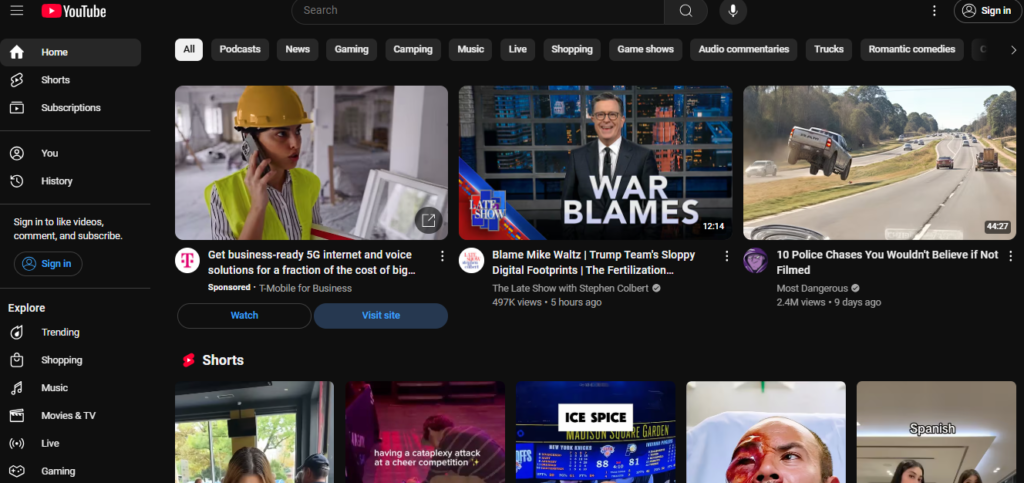
With 2.51 billion users in 2025, YouTube leads every Social Media Video Platform. It excels in long-form content, tutorials, and monetization options. AI-driven YouTube Shorts deliver 30B daily views (YouTube Official Blog, 2023), making it both a short-form powerhouse and a long-form hub.
- Benefits: YouTube’s global reach exposes content to worldwide audiences. YouTube’s advanced analytics dashboard reveals viewer preferences, enabling small businesses and large enterprises to tailor content accordingly.
- Advertising ROI: High ROI stems from diverse audience targeting. YouTube’s TrueView ads reach viewers most likely to engage with content, maximizing ad spend returns.
- Case Study: GoPro showcases user-generated (UGC) content on YouTube, generating 1.5 billion annual views. Brands can replicate this by encouraging customers to share product experiences, building community, and authenticity.
Tip: YouTube’s end screens and cards direct viewers to websites or other videos, increasing engagement and watch time. YouTube Live also offers real-time streaming capabilities with chat interaction, making it perfect for hosting live Q&A sessions, product launches, and webinars.
2. Facebook – The Social Video Giant
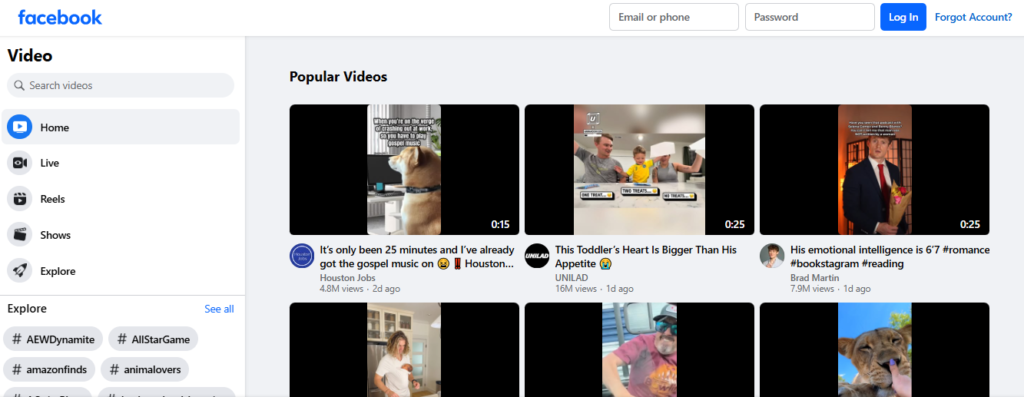
With 2.96B users in 2025, Facebook ranks among the largest Social Media Video Platforms. It supports both short and long-form content while doubling as a messaging hub with text, voice, and video. Brands targeting diverse demographics gain unmatched reach. Its cross-platform integration with Instagram and WhatsApp enables seamless marketing campaigns.
- Benefits: Facebook’s algorithm favors video, boosting content visibility. Tools support behind-the-scenes clips, product demos, testimonials, and influencer collaborations, all improving engagement rates around 3–6%.
- Monetization: Brands monetize through in-stream ads, fan subscriptions, and partnerships. Creator Studio’s analytics dashboards provide metrics on watch time, ROI, and audience retention, guiding better decisions.
- Expert Insight: Neil Patel notes, “Facebook’s video ecosystem is a goldmine for brands targeting diverse demographics.” Brands leverage this to expand reach across audiences of all ages and interests.
Tip: Facebook Live hosts Q&A sessions, product launches, and exclusive events. Live videos receive higher engagement and build stronger audience connections.
3. Instagram – The Home of Reels
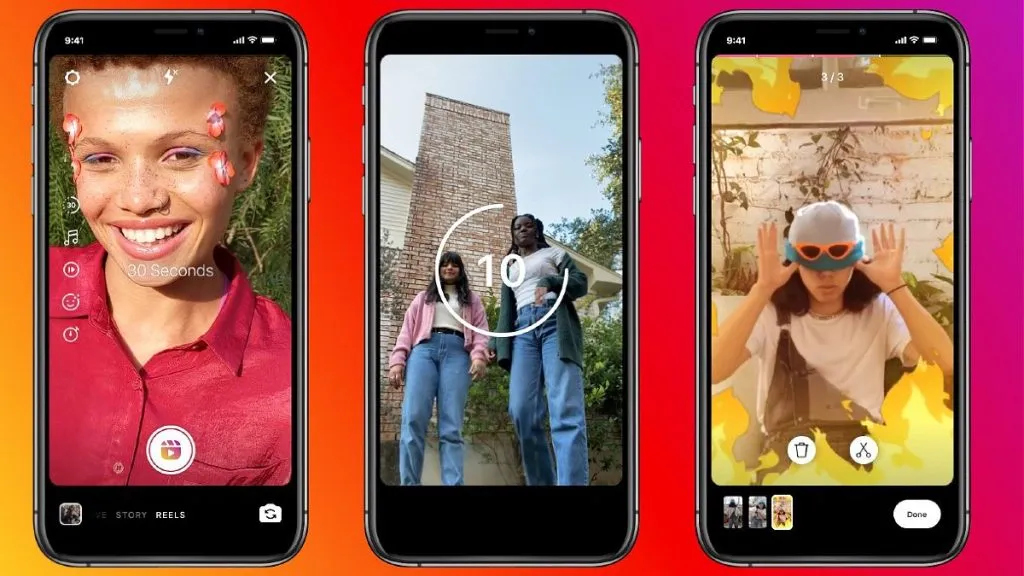
With 2B users in 2025, Instagram ranks among the top Social Media Video Platforms. It thrives on short-form videos, influencer marketing, and shoppable videos. AI-driven recommendations fuel Reels, matching content to target audiences.
- Benefits: Instagram’s visual-driven platform favors brands with strong aesthetics. Fashion, food, and fitness thrive through Reels, Stories, and ephemeral content that boost engagement.
- Case Study: Gymshark grew followers by 30% in 6 months using Instagram Reels. Brands achieve similar results through shoppable videos and creative storytelling. Instagram’s built-in shopping features transform videos into direct sales channels.
Tip: Trending audio and hashtags in Reels increase discoverability. Instagram’s algorithm favors content aligned with current trends, maximizing reach, ROI, and engagement rates of 3–6%.
4. TikTok – The Short-Form Powerhouse
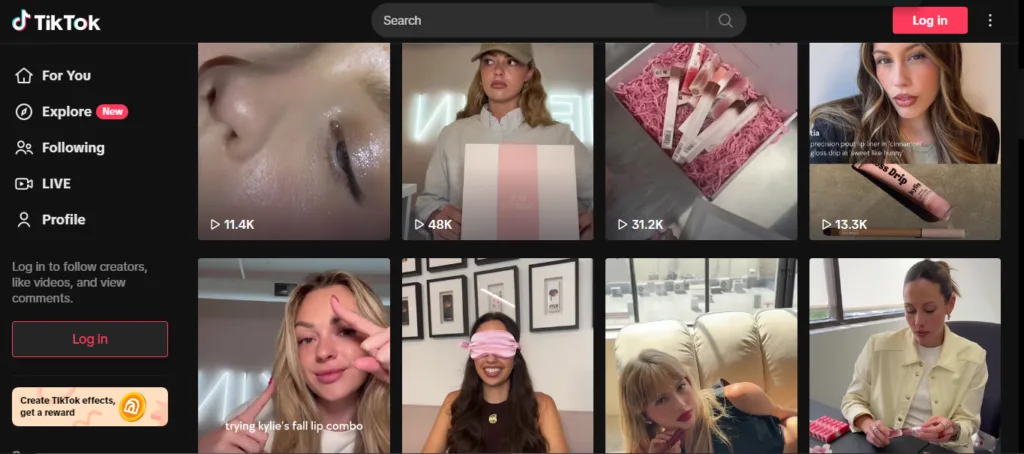
With 1.05B users in 2025, TikTok is a leading Social Media Video Platform. Known for viral trends and influencer collaborations, it delivers high engagement rates. Its algorithm-driven discovery exposes content to audiences most likely to engage, making TikTok a short-form powerhouse and a global microblogging hub.
- Why It’s Perfect for You: TikTok’s creative tools include filters, effects, and soundtracks that simplify engaging content production. Startups and established brands connect with audiences personally through TikTok’s community-driven platform.
- Ad Spend Efficiency: TikTok delivers higher CTRs than other platforms. Campaigns achieve better results with smaller budgets, making TikTok cost-effective.
- Expert Insight: Gary Vaynerchuk states, “TikTok’s algorithm is unmatched in delivering personalized content at scale.” Brands grow audiences by creating content that resonates deeply with viewers.
Tip: Collaborations with TikTok influencers amplify reach. Influencers provide access to loyal follower bases, driving brand awareness and engagement.
5. Lemon8 – The Emerging Hybrid Platform
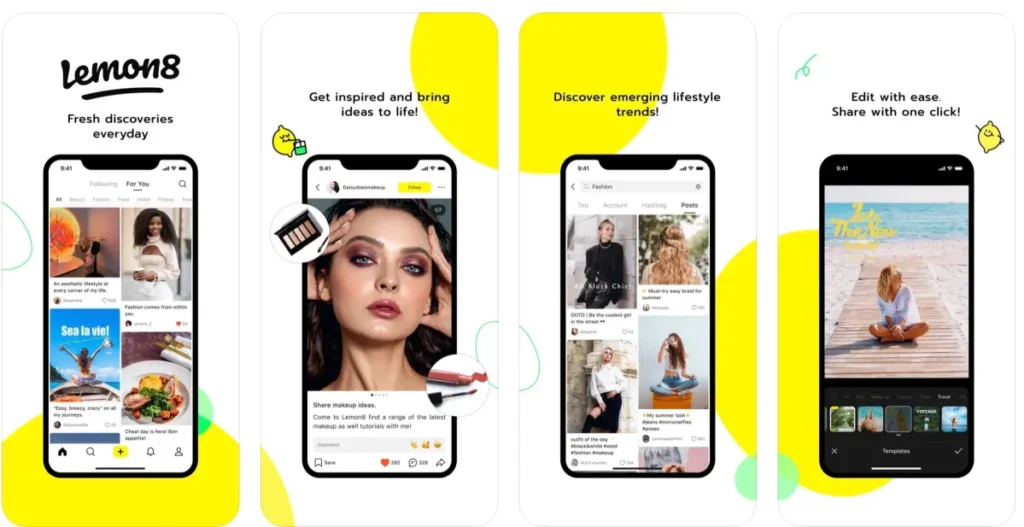
Meta’s Threads, an emerging Social Media Video Platform, focuses on short-form videos similar to Instagram Reels. It thrives on real-time and community engagement. Through cross-platform posting with Instagram, brands reach wider audiences while strengthening loyalty.
Benefits: Threads emphasizes real-time conversations, helping brands nurture loyal communities. Sharing behind-the-scenes content fosters authenticity and supports long-term audience retention.
- Case Study: A beauty brand increased engagement by 50% with tutorials and product reviews. You can achieve similar results from combining tutorial videos, product demos, and storytelling, connecting with audiences personally.
Tip: Use Lemon8’s hashtag system to categorize your content and increase discoverability. This ensures your videos are seen by users who are actively searching for content in your niche.
6. Threads – The New Face of Micro-Video Content
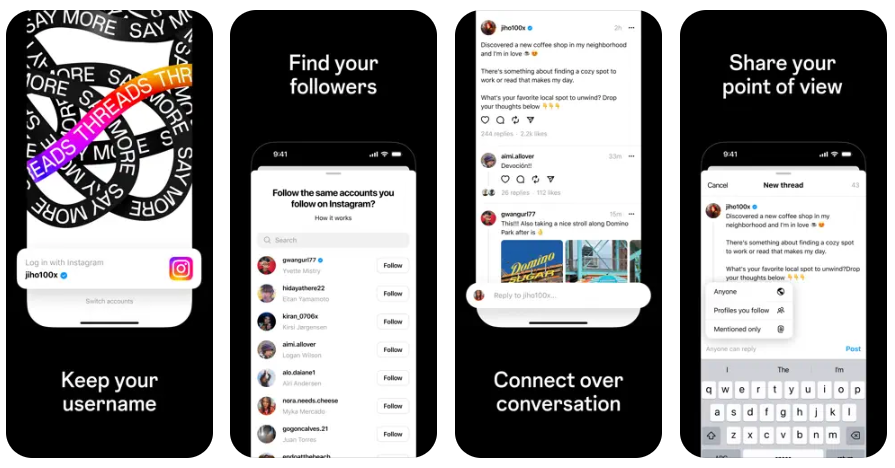
Meta’s Threads, an emerging Social Media Video Platform, focuses on short-form videos like Instagram Reels. It excels at real-time and community engagement. With cross-platform posting to Instagram, brands can expand reach and strengthen audience connections.
- Benefits: Threads emphasizes real-time conversations, helping brands build loyal communities. By sharing behind-the-scenes content, brands improve authenticity and audience retention.
- Expert Insight: Mari Smith says, “Threads are where real-time conversations meet video content.” You can use this platform to foster meaningful interactions with your audience and build a loyal community around your brand.
Tip: Use Threads to share behind-the-scenes content and exclusive updates. This gives your audience a sense of exclusivity and keeps them coming back for more.
7. WeAre8 – The Ethical Video Platform
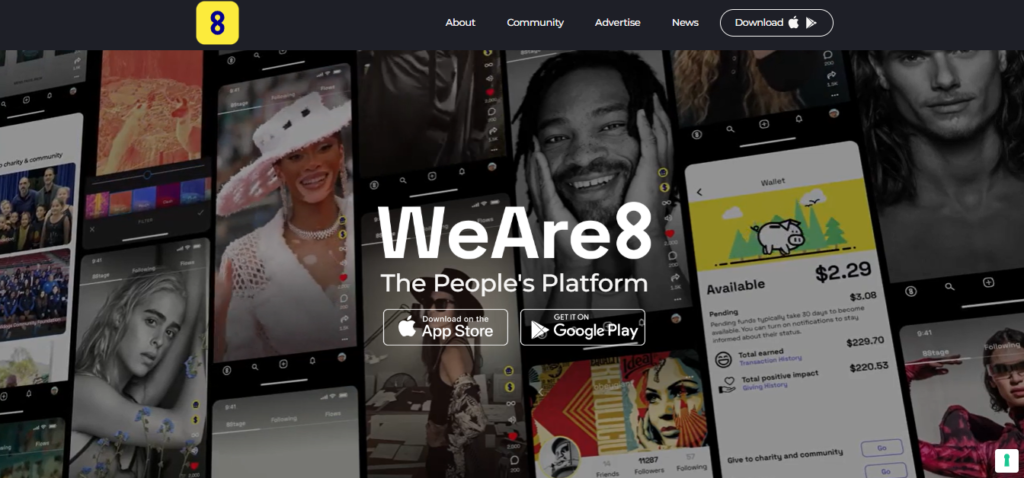
WeAre8 focuses on purpose-driven advertising and stands out as an ethical video platform. It connects brands with socially conscious users through precise audience targeting, aligning content with values that drive authentic connections.
- Benefits: WeAre8 promotes ethical advertising, making it ideal for brands prioritizing sustainability and social responsibility. Aligning with these values builds audience trust, loyal communities, and measurable ROI.
- Case Study: Patagonia boosted brand trust by 20% through WeAre8. Brands using this emerging Social Media Video Platform strengthen ties with socially conscious users while driving revenue growth and community engagement.
Tip: Highlight your brand’s social impact initiatives in your videos. This not only builds trust but also encourages your audience to support your mission.
8. Snapchat – The Youth-Focused Video Hub
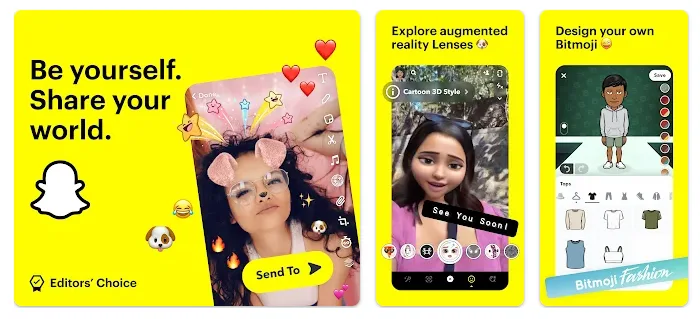
With 635M users, Snapchat is a youth-focused platform for Gen Z and younger Millennials. Its AR filters and interactive ads drive playful engagement and keep audiences returning.
- Benefits: Snapchat’s playful features: ephemeral content, AR effects, and GIFs: connect with Gen Z and Millennials. These tools help brands create memorable experiences that improve audience retention. (Learn how to create a GIF).
- Expert Insight: Amy Porterfield notes, “Snapchat’s AR features redefine how brands engage younger audiences.” These interactive elements boost engagement rates and deepen brand connections.
Tip: Use Snapchat’s AR lenses to create interactive ads that encourage user participation. This not only boosts engagement but also increases brand recall.
9. LinkedIn – The B2B Video Goldmine
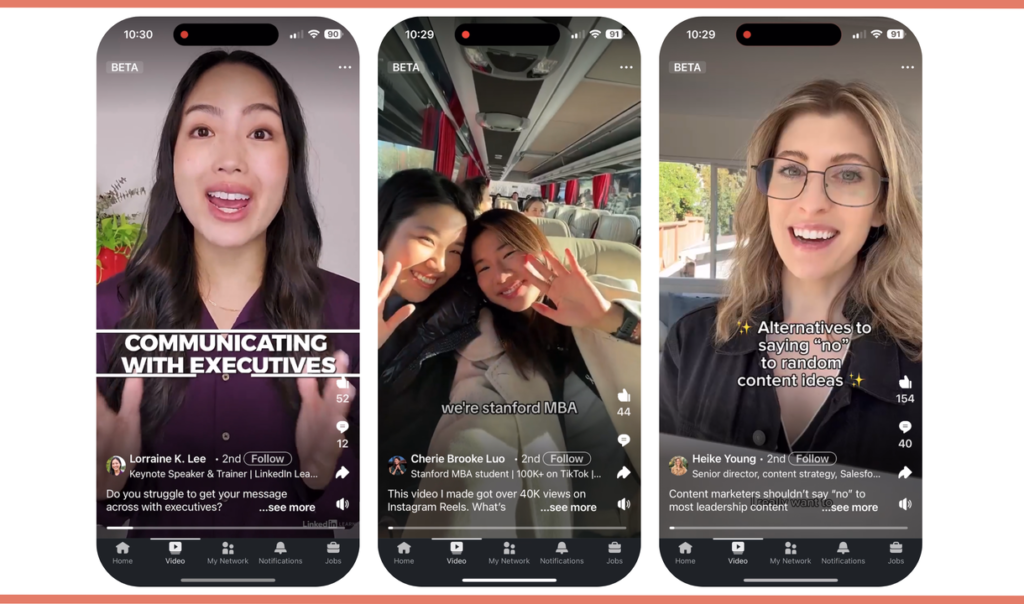
LinkedIn is a leading Social Media Video Platform for professional content and thought leadership videos in the B2B sector. It provides enterprise-grade hosting, analytics dashboards, team collaboration, and white-label solutions for organizations managing multiple brands. Its focus on industry insights and networking makes it essential for B2B marketers.
- Benefits: LinkedIn’s audience consists of professionals and decision-makers, making it ideal for establishing authority in your niche. LinkedIn helps you connect with the right audience through professional content.
- Case Study: HubSpot Utilizes LinkedIn Videos to Share Industry Insights, Generating 2x Higher Engagement Than Static Posts through thought leadership. You can use this strategy to establish authority in your niche and connect with decision-makers in your industry.
Tip: Use LinkedIn’s native video feature to share long-form content, such as webinars or panel discussions. This positions your brand as a thought leader and drives engagement.
10. RedNote – Go-To For Lifestyle Videos
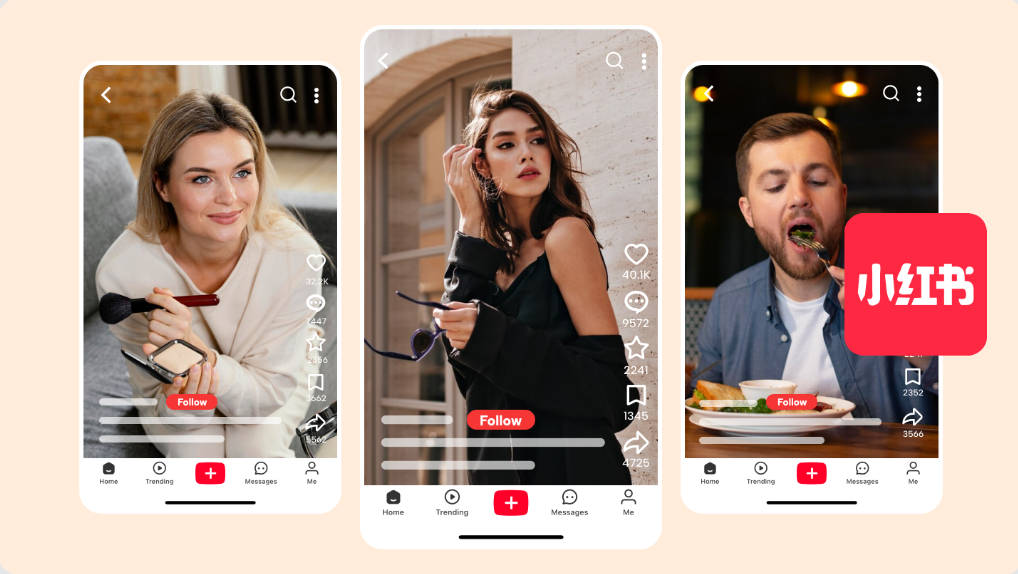
RedNote, an emerging Social Media Video Platform, blends lifestyle videos, e-commerce, and community engagement to target Asian consumers. Its shoppable videos and shopping integrations make it a strong driver of sales and revenue generation.
- Benefits: RedNote emphasizes community engagement and commerce, helping brands tap into audience demographics across Asia. It connects with niche communities through localized video content types, boosting ROI and loyalty.
- Case Study: L’Oréal increased sales by 40% using RedNote’s shoppable videos and shopping integrations. Brands can replicate this with localized lifestyle videos that resonate with target audience demographics, supported by cross-platform integration for maximum reach.
Tip: Use RedNote’s influencer partnerships to amplify your reach. Influencers can help you tap into their loyal follower base, driving awareness and engagement for your brand.
Niche Communities and Video-Centric Social Media Video Platforms
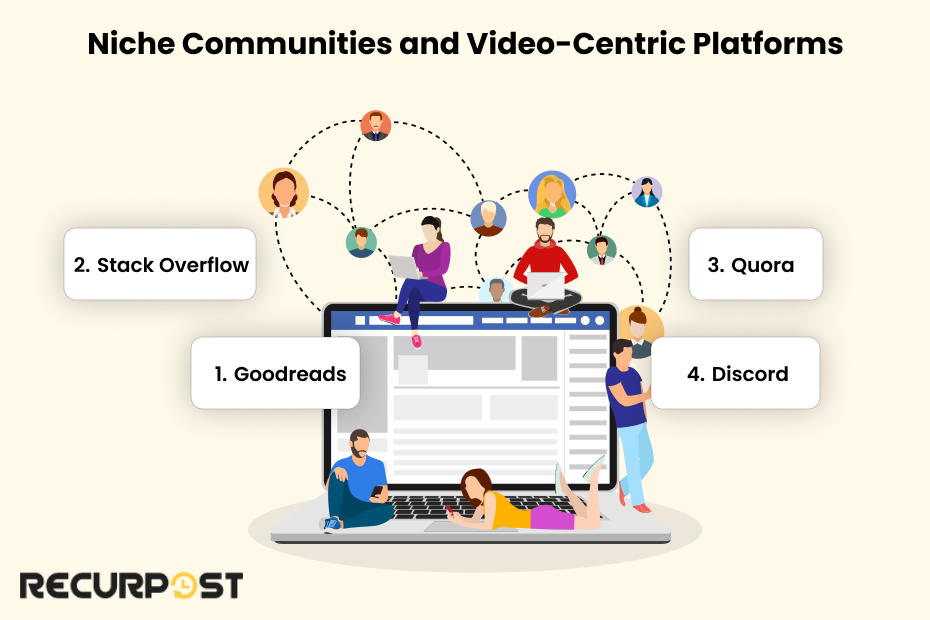
Many social video apps function as Social Media Video Platforms serving niche communities with targeted video content types. These specialized video social networks allow brands to use audience targeting and cross-platform promotion to connect with engaged users.
Niche Communities:
- Goodreads: A haven for book lovers to share reviews and recommendations.
- Stack Overflow: A go-to resource for developers seeking coding help and sharing knowledge.
- Quora: A platform for asking questions and sharing expertise across various topics.
- Discord: Originally for gamers, now a versatile communication platform for various communities.
Video-Centric Social Media Video Platform:
- YouTube: Ideal for long-form video content, tutorials, and vlogs.
- TikTok: The leader in short-form video content, perfect for viral trends and quick engagement.
- Vimeo: A platform favored by creative professionals for high-quality video sharing.
- Twitch: The premier live streaming platform, especially popular among gamers and e-sports enthusiasts.
These video-centric Social Media Video Platforms often deliver stronger ROI and conversion rates when brands target niche communities with video content types designed for loyalty and long-term growth
Key Media Trends in Social Media Video Content for 2025
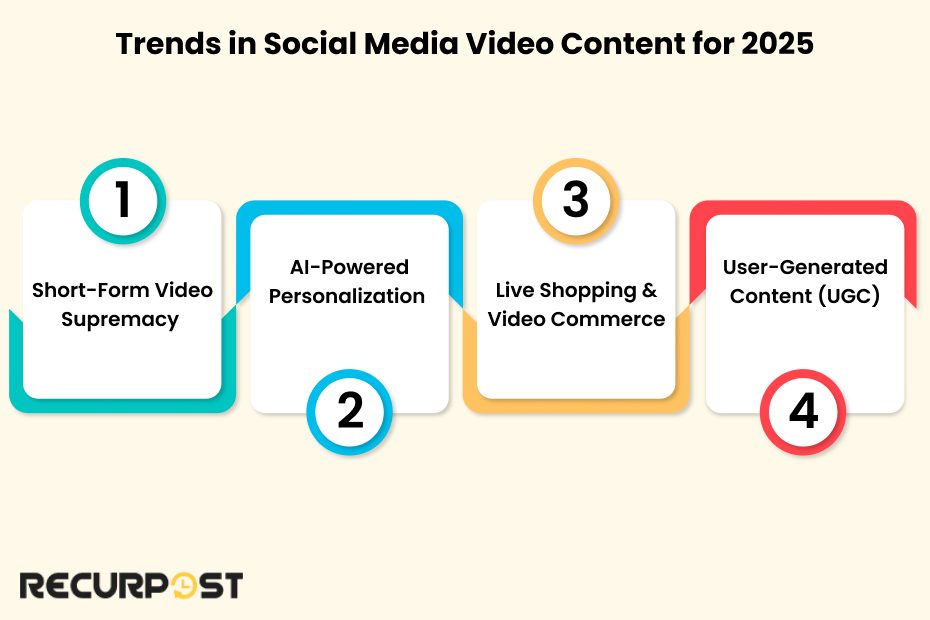
1. Short-Form Video Supremacy on Social Media Video Platforms
70% of marketers now prioritize short-form videos on Social Media Video Platforms like TikTok and Instagram Reels. These short-form powerhouses capture attention faster with vertical video formats, mobile-first approaches, and traffic share projected at 82% by 2025. Choosing the right video distribution platforms boosts engagement and conversion rates.
2. AI-Powered Personalization in Social Media Video Platforms
AI-driven recommendations on platforms like YouTube Shorts and Instagram Reels increase watch time by 30%. Brands use content recommendation algorithms to improve audience retention, ROI, and performance metrics, delivering content that feels tailor-made.
3. Live Shopping & Video Commerce Across Social Media Video Platforms
42% of consumers prefer shoppable videos and video commerce. Platforms like Facebook, Instagram, and RedNote offer shopping integrations with cross-platform posting, driving revenue generation and faster revenue growth (49% higher).
4. User-Generated Content on Social Media Video Platforms
84% of users trust user-generated content (UGC) over ads. Platforms like YouTube, TikTok, and WeAre8 encourage influencer collaborations, behind-the-scenes content, and community engagement, building authenticity, trust, and long-term loyal communities.
Social Media Marketing Strategies
Want to go beyond videos? Make sure your websites and social media strategies work together. They’re stronger when aligned.
A strong Social Media Video Platform marketing plan expands brand reach and raises engagement rates (3–6%). Here are proven video marketing strategies:
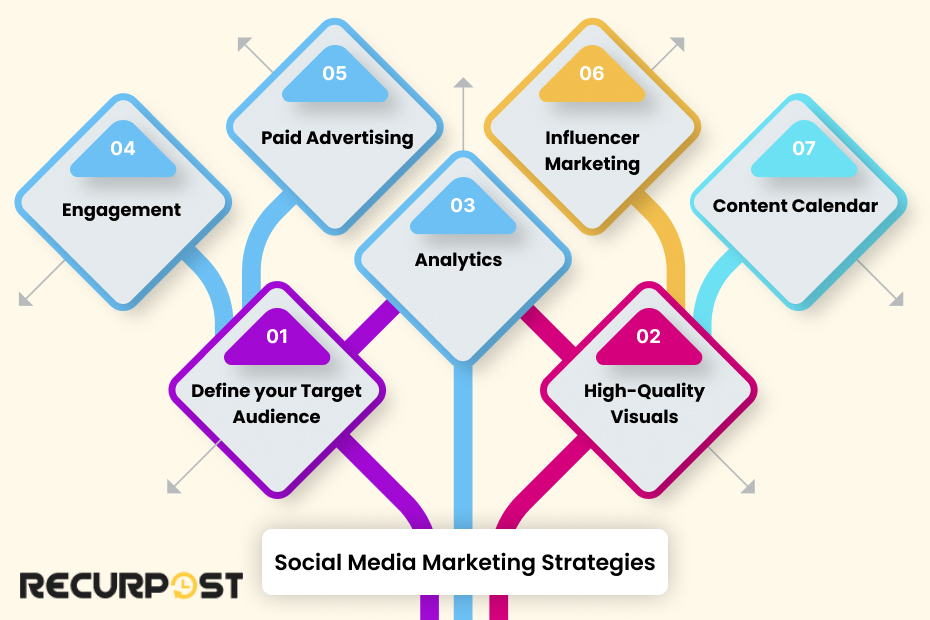
1. Define Audience Demographics: Use audience targeting tools to tailor video content types that resonate with each demographic on Social Media Video Platforms.
2. High-Quality Videos: Publish visually appealing content like tutorials, product demos, and behind-the-scenes content to capture attention and drive conversion rates.
3. Analytics Dashboards: Use analytics dashboards and performance metrics across video distribution platforms to refine campaigns and improve ROI.
4. Community Engagement: Reply to comments and messages to build loyal communities. Cross-platform promotion amplifies engagement across networks.
5. Paid Advertising: Run targeted ads on Social Media Video Platforms. Platforms like YouTube and TikTok deliver measurable ROI through TrueView ads and trend-driven formats.
6. Influencer Collaborations: Partner with influencers to access niche communities. Shoppable videos and influencer marketing boost credibility and sales.
7. Content Calendars: Maintain consistent posting with content calendars and cross-platform integration, ensuring video SEO optimization and stronger reach.
To streamline, use all-in-one Social Media Video Platform apps. They centralize content calendars, analytics dashboards, cross-platform posting, and audience targeting, driving performance metrics from one dashboard.
By applying these video marketing strategies on Social Media Video Platforms, brands achieve higher engagement rates, ROI, conversion rates, and audience retention.
Content Creation and Social Media Video Platform

Creating compelling video content is central to success on Social Media Video Platforms. Use these tips to increase engagement rates, ROI, and conversion rates while building loyal communities:
1. High-Quality Videos: On Social Media Video Platforms, publish high-quality videos with strong visuals, headlines, and video SEO optimization to capture attention and improve audience retention.
2. Concise Video Content: Keep short-form videos concise. Use vertical video formats designed for a mobile-first approach to maximize reach.
3. Storytelling in Video Content: Build connections through storytelling techniques in tutorials, product demos, and thought leadership videos. Stories improve trust and foster niche communities.
4. User-Generated Content (UGC): Encourage UGC on Social Media Video Platforms. Influencer collaborations and behind-the-scenes content foster community engagement, authenticity, and measurable ROI.
5. Content Mix: Balance promotional, educational, and entertaining video content types. Mix live streaming, short-form videos, and webinars to build conversion rates and keep audience demographics engaged.
6. Emotion and Humor in Video Content: Use emotional or humorous video content on Social Media Video Platforms to spark viral trends, drive engagement rates, and increase shareability.
7. Format Variety: Experiment with video content types, including short-form videos, AR filters/effects, live streaming capabilities, and cross-platform promotion to attract wider audience demographics.
Add playful elements like GIFs, AR effects, and interactive video elements. These tools increase real-time engagement and keep audiences active across video social networks.
By following these tips, brands create engaging video content on Social Media Video Platforms, improving audience targeting, audience retention, ROI, and loyal communities.
Wondering how websites fit into the social world? Learn whether a website counts as a social media platform and how to optimize both together.
Tools for Creation on Social Media Video Platforms
To produce high-quality video content for Social Media Video Platforms, brands rely on video creation platforms and video editing tools. These tools lower production costs while increasing ROI, conversion rates, and performance metrics.
Lumen5: An AI-powered video creation platform that converts blog posts into video content types. It automates video SEO optimization and enables cross-platform posting across all video platforms, saving time while boosting visibility.
Animoto: A video social media app with a user-friendly interface and pre-built templates. It supports content creation, branded formats, and video distribution platforms, helping brands improve audience targeting and expand reach.
Conclusion

Video content is the foundation of 2025 marketing. Choosing the right Social Media Video Platform shapes reach, virality, sales, trust, and measurable outcomes like ROI, conversion rates, and audience retention.
YouTube provides scale with video distribution platforms and analytics dashboards. TikTok delivers speed with short-form videos and viral trends. Instagram combines style with shoppable videos and influencer collaborations. Facebook reaches diverse demographics with live streaming and cross-platform promotion. Newer emerging platforms like Lemon8, Threads, RedNote, and WeAre8 grow niche communities.
Focus on Social Media Video Platforms where your audience engages. Apply audience targeting, analytics dashboards, performance metrics, and community engagement to drive loyal communities, generate revenue, and foster growth.
On Social Media Video Platforms, maximize video content types: from UGC and AR/VR experiences to vertical video formats. A mobile-first approach ensures every second delivers engagement rates and lasting impact.
Still refining your strategy? Brush up on key definitions with this social media definition guide.
FAQs on Social Media Video Platforms
1. Best Social Media Video Platforms for Gen Z Audiences?
TikTok and Instagram, leading Social Media Video Platforms, dominate with short-form videos and Reels. Their mobile-first approach, vertical video format, and viral trends capture Gen Z audience demographics with high engagement rates.
2. Small Business Growth on Social Media Video Platforms
Facebook, YouTube, and Instagram empower small businesses with video content types like product demos, customer testimonials, and live streaming capabilities. With analytics dashboards, audience targeting, and cross-platform promotion, these platforms drive ROI, conversion rates, and loyal communities.
3. Key Performance Metrics of success on Social Media Video Platforms?
Success is tracked through performance metrics: view count, engagement rate (likes, comments, and shares), CTR, conversion rates, audience retention, and ROI. These analytics dashboards identify which video content types perform best across video distribution platforms.
4. How to Choose the Right Social Media Video Platform for Your Brand?
Match audience demographics, content types, and marketing goals with platform strengths. Use audience targeting tools to align with niche communities. Platforms like YouTube (long-form), TikTok (short-form), Instagram (influencer collaborations), and Facebook (diverse demographics) maximize outcomes
5. Emerging video marketing trends for 2025?
Top trends include short-form videos, AI-driven recommendations, live shopping, and user-generated content (UGC). AR/VR experiences, interactive video elements, and cross-platform posting are rising. Together, these trends boost traffic share, revenue generation, and loyal communities.

As a passionate content writer, I love blending creativity with research to craft compelling narratives that inform, engage, and inspire. With a strong focus on user engagement and brand communication, I create content that resonates with the audience and drives meaningful interactions.

